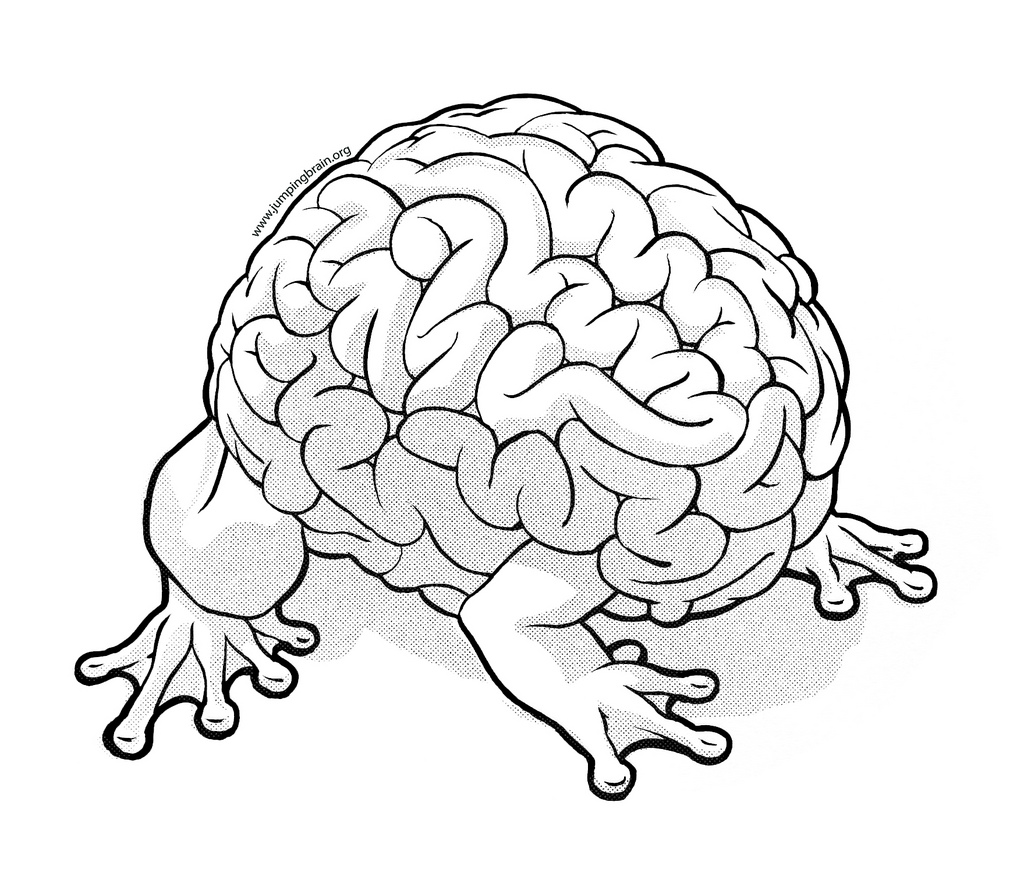How To Enhance Your Creativity - Taming The Wild Mind
Myths have developed around and researchers have studied how the human brain juggles creativity and organization. Popular theory tells us that the left brain is structured and logical, while the right brain is artistic and imaginative, and that all human beings use predominantly one side of the other.
Working in a creative field means challenging that theory, or else challenging the schedules and deadlines that managers impose on writers, designers and other creatives. As a project manager in a UX design agency, as well as a writer, I believe it is necessary to challenge both the assumptions about schedules and the belief that creativity implies disorganization.
Further Reading on SmashingMag:
- The Process of Creativity
- How I Make Ideas Happen – 5 Tips
- Up On The Wall: How Working Walls Unlock Creative Insight
- How To Transform Your Problem-Solving And Creativity
Can Creativity Be Scheduled?
There’s a quick and easy answer to this question. Yes!
You’re shaking your head now. You’re thinking about how much you hate deadlines and how your designs suffer from the 9:00 to 5:00 schedule imposed by your manager. You’re remembering the sketches or creative writing you did in college at 3:00 in the morning. Sathish Manohar expresses it well in his article “Why 9 to 5”:
“Knowledge work solely depends on creativity of the workers. But, still some how, knowledge work-places got modeled around factories. Employees had to work 9-5, be creative between 9-5, and go home… This is a problem, We cannot schedule the brain to be creative at any given time.”
Yet I’ve spent years trying to merge my creative-writing personality with my project-management skill set and day job. Recently I realized that writing by the light of the moon results in over-caffeinated mornings and sloppy grammar, and still I continued—after all, isn’t that what creativity is all about? I’ve always been able to empathize with my designers, who want nothing more than free reign to be creative when the mood hits. But as a project manager, I also strive to create a working environment where designers and content strategists can be productive and efficient—and where we can deliver mockups on a deadline.
The solution turned out to be easier than you might expect. Spontaneous creativity is not the only way. In fact, as a content strategist, designer or even developer, you are paid for your ability to turn on the creative faucet. So, what goes into creating on command?
1. Create A Routine
"Be regular and orderly in your life so that you may be violent and original in your work." – Gustave Flaubert, author
Flaubert did not write on a deadline, and yet he found that following an orderly routine improved his ability to be creative. This holds true for most people. Being able to “do your best work” at 3:00 am is no coincidence: you are training your brain to get those creative juices flowing when the moon is high and the workday is long over. This is fantastic if you don’t have anywhere to be in the morning; but for many of us, 3:00 am is not a great time to be inspired.
Instead, develop a routine that trains your creative juices to kick in at more convenient times. This could mean setting the alarm for 8:00 am, making breakfast and then sitting down with a journal to begin sketching as you eat. It could mean emailing yourself a to-do list before bed, with inspirational quotes to greet you the moment you open your email. Maybe you need a lunchtime scrum every day to energize and focus. Within two weeks, these mini-kickoffs will begin to signal to your brain, “Now is when we begin the creative work of the day.”
2. Take Your Time
"A single meeting can blow a whole afternoon, by breaking it into two pieces each too small to do anything." – Paul Graham, essayist and programmer
Distractions are a powerful creativity-blocker. Even the best routine can be waylaid by mandatory meetings, important phone calls and constant emails. If you are a freelancer in charge of your own schedule, try to relegate meetings to the very beginning or end of the day. If a manager schedules your client meetings and internal reviews, talk to them about the benefits of opening up large blocks of time for creative work.
At Above the Fold, we make a point of scheduling around the “maker’s schedule.” Paul Graham sums up the maker’s schedule in his essay, “Maker’s Schedule, Manager’s Schedule”:
“When you’re operating on the maker’s schedule, meetings are a disaster. A single meeting can blow a whole afternoon, by breaking it into two pieces each too small to do anything hard in. Plus you have to remember to go to the meeting. That’s no problem for someone on the manager’s schedule. There’s always something coming on the next hour; the only question is what. But when someone on the maker’s schedule has a meeting, they have to think about it…. I find one meeting can sometimes affect a whole day. A meeting commonly blows at least half a day, by breaking up a morning or afternoon.”
Therefore, at Above the Fold, we hold internal reviews at 5:00 pm, check-in meetings at lunchtime, and client calls first thing in the morning. This gives our creative team the time they crave to get engrossed in projects, without interruption.
This doesn’t solve the issue of interruption via email, of course. Try scheduling specific “Check email” times into your day—again, first thing in the morning, just before your lunch break or at the end of the day works well. Make sure your team is aware that you will not be responding to emails immediately, and suggest they call you or come find you if something is urgent and relevant to the current project. Team members can be surprisingly understanding and can quickly grasp the difference between imperative and interesting.
3. Use Your Team
"Separate brainstorming (idea generation) from synthesis (putting it all into a flowing post)." – Tim Ferriss, author
Having large blocks of time available and scheduling them into your day sounds well and good, but how do you convince your brain that the time has come to get in the zone and ignore distractions?
Taking a page out of the Agile development book, try starting with a variation on pair programming. Pair programming is designed to help developers break down complex tangles of code with the simple rationale that two heads are better than one. The same is true for kicking off any other sort of creative block of time. Instead of working together all day, kick off the day with a 10-minute group brainstorming session. Nothing focuses the creative mind faster than talking through project details, and 10 minutes can lead to a far more productive three hours of synthesis.
Don’t have a team to kick around ideas with? Hit up a few colleagues on Twitter or Skype. We have found that many in the content and design worlds are happy to help, and you can offer to help in return.
4. Warm Up Your Muscles
"Major league players aren’t the only professionals that regularly practice. We’ve met musicians, firemen, pilots, and surgeons, all of who regularly practice their skills." – Jared M. Spool, founding principal of User Interface Engineering
Athletes warm up their muscles before starting their real work, and so should creative thinkers. A good warm-up helps you practice basic skills, focus your mind and improve the work to come. In addition, taking 10 minutes to warm up allows you to separate your ideas from the plethora of ideas surrounding you.
A few hundred years ago, visual stimulation was hard to come by, and artists were influenced primarily by their surroundings. Now, our surroundings contain hundreds of representations of our surroundings and of other people’s interpretations of their surroundings. Finding your own voice can be difficult amid the clutter.

The following quick warm-ups can bring you back to basics and isolate what makes your creative voice unique. Some of these suggestions even include using someone else’s work as a starting point—but making it your own.
- Write your thoughts down in a journal.
- Doodle for 10 minutes in a sketchpad.
- Copy the first sentence of a book, and then write a one-page story that begins with that sentence.
- Create three variations of a landing page based on different mood themes (happy, scary, sad, etc.).
None of these warm-ups should take more than 10 minutes, and each offers a different way to reconnect you to your creative spirit. From here, you might find it easier to begin thinking about new and different ideas, and even jumpstarting a project that has felt stale.
5. Save The Best For Last
"Laziness in a white collar job has nothing to do with avoiding hard physical labor. “Who wants to help me move this box!” Instead, it has to do with avoiding difficult (and apparently risky) intellectual labor." – Seth Godin, entrepreneur, author and speaker
Most creative jobs come with a catch, such as having to respond to client emails, send invoices or email writing samples. It’s not uncommon for these boring, “uncreative” tasks to turn into a means of procrastination. You feel as though you can’t set a task aside because it must be done; but because you don’t want to do it, you procrastinate—effectively avoiding both your creative work and your busywork.
Invoices and emails and bills are quick tasks, so we don’t feel as though delaying them by an hour or two costs much. But the hour you spend avoiding a five-minute task eats away at your creative time. What’s more frightening is the possibility that you’re actively using these tasks to avoid your creative work. As Seth Godin explains, this is due to “lizard brain”:
“The [lizard brain, or resistance,] is the voice in the back of our head telling us to back off, be careful, go slow, compromise. The resistance is writer’s block and putting jitters and every project that ever shipped late because people couldn’t stay on the same page long enough to get something out the door.”
We’ve all dealt with lizard brain, and many of the suggestions in this article can help combat it. But how do you remove the procrastinations that are genuine work, the busywork that must be done but just gets in the way?
Try setting aside one morning a week (Monday is a good day) to devote to the boring tasks. Relegate email reminders of the busywork to a “Monday” folder. Keep all physical folders and to-do lists for that work away from your desk. Of course, you don’t want to wake up one day and realize you forgot to pay the bills, but you won’t forget housekeeping chores like that if you assign them to a specific time slot—and not that generic “tomorrow.”
One more tip: don’t sit in your creative spot to do the busywork. The area for busywork will quickly get cluttered with to-do notes that have nothing to do with the creative work that you need to accomplish. Do the necessary evils somewhere else to avoid distracting yourself the next time you begin your “real” work.
Untamed Creativity
Saying that a wild creative mind can’t be tamed sounds romantic, but romanticism will serve you better in your actual products than in your schedule. The advice above will help you schedule your mind, enhance your creativity and use team members, time constraints and even deadlines to your advantage. Give your creative mind the structure and security it needs to run wild.
Other Resources
Here are some more resources on creative productivity:
- “Develop a UX Practice of Practicing,” Jared Spool Find ways to warm up before work.
- “Quieting the Lizard Brain,” Seth Godin Learn more about the dreaded lizard brain and why we get in our own way.
- Gamestorming, Dave Gray Explore activities to get you brainstorming in a group. Gray’s book and his Gamestorming website are full of activities and ideas.
- “How Creativity Works,” Jonah Lehrer An interview about all different types of creativity.
- Time Management for Creative People, Mark McGuinness This free eBook deals with how to better structure your creative time.
What other tips and tools help you to be creatively productive?
(al) (il)



 Agent Ready is the new Headless
Agent Ready is the new Headless

 Save 60% on Vue School Black Friday Sale
Save 60% on Vue School Black Friday Sale
 SurveyJS: White-Label Survey Solution for Your JS App
SurveyJS: White-Label Survey Solution for Your JS App



